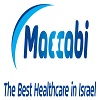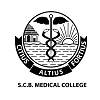Day 1 :
Keynote Forum
Royce P Vincent
King’s College Hospital NHS Foundation Trust | UK
Keynote: The role of bile acids in remission of type 2 diabetes after metabolic surgery

Biography:
Royce P Vincent (MBBS, MSc, EuSpLM, FRCPath, MD) is a Consultant Chemical Pathologist at King’s College Hospital NHS Foundation Trust and an Honorary Senior Lecturer at King’s College London, UK. He is the Clinical Lead for Biochemistry and Parenteral Nutrition services. He obtained his MD (Res) at Imperial College London. His research interests are in clinical nutrition, obesity and endocrinology. He has published multiple original research and review articles and is serving as an international editorial board member for Translational Metabolic Syndrome Research.
Abstract:
Type 2 diabetes is a pandemic afflicting more than 400 million people, with estimates of 650 million cases by 2040. Even with significant advances in pharmaceutical agents recently shown to reduce cardiovascular events, many patients with diabetes fail to achieve glycaemic treatment goals required to reduce micro and macrovascular complications. Metabolic surgery (bariatric surgery) is currently the most effective treatment to achieve significant and sustained weight loss in morbid obesity. There is now growing evidence of long-term remission of type 2 diabetes after metabolic surgery hence, the second Diabetes Surgery Summit (DSS-II), an international consensus conference, developed global guidelines that recommend inclusion of metabolic surgery among interventions for selected patients with type 2 diabetes and obesity. These recommendations have now been endorsed by more than 50 organisations worldwide, including major national and international diabetes and surgical societies. However, the pathophysiology of improved glucose metabolism after metabolic surgery remains poorly understood. Bile acid pool and composition are altered following certain metabolic surgeries. Thus, bile acids have emerged as a potential contributor to the improved glycaemic control after the procedures. Bile acids are the main component of human bile and have traditionally been considered mediators of lipid absorption and cholesterol metabolism, facilitated by their amphipathic nature. In recent years the discovery that specific bile acids differentially activate the G protein-coupled membrane receptor (TGR5) and the nuclear receptor, farnesoid X receptor (FXR), has identified bile acids as complex metabolic molecules that play a role in numerous pathways. This session will provide an overview of our current understanding of the interplay between bile acids and incretin (gut) hormones, the laboratory analysis of bile acids and its potential role in improving glycaemic control and remission of type 2 diabetes.
Keynote Forum
Serge P Bottari
University Grenoble Alpes | France
Keynote: Serum IRAP, a novel direct biomarker of Insulin-resistance as a screening, diagnostic and drug discovery tool

Biography:
Serge Bottari, obtained his M.D. and Ph.D. degrees at the Free University Brussels, Belgium. He specialized in OB/GYN and Biochemistry and was a Post-Doctoral Fellow and Research Associate at UC San Francisco. After having been a project leader at Sandoz and CIBA-Geigy, he became Professor of Cell Biology at the Medical School in Grenoble and Head of Endocrine Biology in 1993. His articles in premium journals have been cited more than 4000 times and he is a member of several editorial boards. He also holds several patents. His current work focuses among others on the molecular mechanisms involved in insulin resistance and on the development of novel diagnostic tools.
Abstract:
Insulin resistance (IR) affects more than half of the adult population worldwide. Type 2 diabetes (T2D), which often follows in the absence of treatment, affects more than 400 million people and represents more than 10 % of the health budget in industrialized countries. A preventive public health policy is urgently needed in order to stop this constantly progressing epidemic. Indeed, early management of IR does not only strongly reduce its evolution towards T2D but also strongly reduces the appearance of cardiovascular comorbidity as well as that of associated cancers. There is however currently no simple and reliable test available for the diagnosis or screening of IR. We therefore developed an ELISA for the quantitative determination of a novel circulating biomarker of IR, IRAP. IRAP is associated with and translocated in a stoechiometric fashion together with GLUT4 to the plasma membrane in response to insulin in skeletal muscle and adipose tissue. Its extracellular domain is subsequently cleaved and secreted in the blood stream. In T2D, IRAP translocation in response to insulin is strongly decreased. Our patented sandwich ELISA is highly sensitive and specific, robust and very cost-effective. Results of pilot studies indicate an excellent correlation between serum IRAP levels and insulin sensitivity. We therefore believe that serum IRAP is a direct marker of insulin sensitivity and that the quantitative determination of its plasma levels should allow large-scale screening of populations at risk for IR and T2D, thereby allowing the enforcement of a preventive health policy aiming at reducing this epidemic. Similarly, simple companion tests alowing the assessment of the efficacy of novel drugs aimed at improving insulin sensitivity do not exist yet. As such serum IRAP appears as a useful alternative to the euglycemic hyperinsulinic clamp which is very tedious, expensive and requires experencied teams, to monitor insulin sensitivity in human in clinical trials and therapeutic trials.
- Diabetes Melitus Type 1 | Diabetes Melitus Type 2 | Diabetes Research | Diabetic Disorders and Treatment Diabetes types and symptoms | Diabetes Medications | Management of Diabetes | Diabetes Technology
Location: Zieten

Chair
Serge P Bottari
University Grenoble Alpes | France

Co-Chair
Royce P Vincent
King’s College Hospital NHS Foundation Trust | UK
Session Introduction
Neuman Toomas
IPDx Immunoprofiling Diagnostics GmbH
Title: Immunoprofiling: Early changes in the immunoprofile predict the development of Type 2 Diabetes
Time : 11:30-12:00
Biography:
Toomas Neuman, Ph.D., has 40 years research experience in academia and industry. He is an expert in immunology and molecular and cell biology and founder of several biotechnology companies in US, Estonia and Germany. He published more than 80 research papers and presented at hundreds of scientific forums in more than 15 countries and is inventor of 8 patents and 7 patent applications.
Abstract:
Type 2 Diabetes (T2D) is related to numerous complications in metabolic, inflammatory and vascular systems as well as significant changes in the immune response including changes in antibody profiles. Numerous papers show that development of T2D is related to changes in the immune system. Using novel patented antibody profiling technology, Mimotope Variation Analysis (MVA), enabling to analyze up to 109 antibodies in one blood sample, we have demonstrated the presence of D specific antibody profiles by comparing healthy (control), high risk (obese), prediabetes (glycose and glycosylated hemoglobin) and diagnosed T2D individuals. Study results demonstrate that T2D patients have been shown to have changes in the gut microbiome, virome and immunome. Immunoprofiling using MVA clearly shows changes in antibody profiles in the course of development from high risk group to diagnosed T2D. These changes reflect immune responses to changes in virome, microbiome and different autoantigens. Using specific antibody patterns we have identified serological biomarkers, characteristic for T2D, and developed diagnostic tools to screen high risk group individuals. Developed prognostic test enables to identify high risk group individuals who will develop preT2D and T2D. Our test is based on the analysis of autoantibodies binding to specific peptide epitopes Test validation studies resulted in high specificity and sensitivity (see Fig1).
Evrim Kızıler
Ankara Yıldırım Beyazıt University | Turkey
Title: Validation of Transition Readiness Assessment Questionaire (TRAQ) in Turkish adolescents and young adults with diabetes
Biography:
Evrim Kızıler is an Asst. Professor in Clinical Paediatrics at Yıldırım Beyazıt University (School of Medicine) Turkey. She completed her masters at University of Health Sciences in the department of paediatric nursing. She done her schooling in Gulhane School of Nursing at Ankara.
Abstract:
Background: Today, more than 90% of adolescents with chronic conditions are surviving into adulthood and move pediatric to adult care with their chronic illness. It is important to gain autonomy and ensure readiness for adolescents/ young adults to use the adult health care system prior to the transfer of care. However, the lack of the transition readiness assessment tool which is validated, patient-centered and appropriate to developmental differences in pediatric care is seen a major obstacle for transition of care from pediatric to adult services.
Aim: The aim of this study is examining of validity and reliability of a Turkish version of Transition Readiness Assessment Questionaire (TRAQ) that assess readiness for transition from pediatric to adult health care for adolescents/ young adults with diabetes.
Study design: Methodological study Methods: Participants were 109 adolescents/ young adults with type 1 diabetes aged 14 to 21 years. After obtaining permission to adapt the TRAQ, Turkish TRAQ and “self care scale” were applied to participants through face to face interviews in two pediatric endocrinology clinics. Validity was evaluated by exploratory and confirmatory factor analysis and content-scope validity; reliability was evaluated by item-total score correlation and continuity methods. Internal reliability was assessed by Cronbach's alpha and criterion validity.
Conclusion: The Turkish version of TRAQ is a valid and reliable measure of transition readiness of adolescents/young adults (AYA) with diabetes in Turkey. TRAQ assesses self management ability and HCT knowledge of the AYA with diabetes who need special health care. It is also considered to be a guide for health care professionals for detecting the educational fields that is required to gain self management and self care abilities.
Results: The item analysis, Explatory Factor Analysis (EFA) and Confirmatory Factor Analysis (CFA) identified 5 basic dimensions with high internal consistency (.89 to .75). x2/df and the other conformity indices were good fit to the data. The correlation coefficient in the analyses of test–retest scores was .86 for the total scale (p < .05) and the Cronbach’s alpha coefficient was found as .88 for overall scale.
Angela Irony
Maccabi HealthCare Services | Israel
Title: Change in DM self-efficacy for self management –MTC effect compared to standard community care
Time : 12:30-13:00
Biography:
Angela Irony, RN, Ph.D., is the Chief Nursing and Medical Centers Officer at Maccabi HealthCare Services, the second largest HMO in Israel. At her prior position as the director of the telehealth centers she led the creation and operation of the on-line platform for remote chronic care. She represented Maccabi's telehealth experience in the World Economic Forum in New York in September 2017. She is a guest lecturer in universities and colleges.
Abstract:
Background: The diabetes epidemic call for integrative solutions to address this challenge. Designated interventions are needed in order to prevent or delay diabetes complications. Maccabi Telecare Center (MTC) is a multi-disciplinary service providing a remote treatment solution to 6,000 members who suffer from chronic illness. Proactive monitoring by MTC's multi-disciplinary staff is based on the chronic care model (CCM) empowering patients to self-management through selfefficacy.
Aim: To examine the association between MTC's treatment setting (CCM + telemedicine) and patients’ DM selfefficacy (DMSE) and other health outcomes compared with the DMSE of patients receiving standard community care.
Method: A large-scale comparative prospective study with stratified sampling and repeat measures. Study population include all HMO members with diabetes type 2, with HbA1c > 8%. Patients who were recruited to MTC comprised the intervension group. Patients matched by demographic and clinical variables composed the control group. In the 8-9 month intervention period patients were trained and empowered in self-management. Patients in the control group received standard community care. At baseline, all participants completed DMSE Scale; IPQ-R (illness representation); PHQ (depression) and SF-12 (Qol) at baseline, 3-4 months and 8-9 months. Results: 832 patients - 433 (intervention) and 399 (control) – aged 59 (±11.3) , 8.9 (±5.5) years of diabetes duration and HbA1c of 10.1 at baseline (±1.7). Participation in the intervention group was related to higher DMSE along the study period. At baseline, DMSE in both groups was identical (p = NS), yet after 3-4 months and after 8-9 months DMSE was higher in the intervention group (p < .001). Second, over the study period, compliance increased in the intervention group and declined in the control group (p < .05). Hb1Ac values declined in both groups although the decline was greater in the intervention group (p < .001). No differences were found in QoL and depression levels between the study groups. Illness representation affected patients’ QoL and mood, independent of study group. Conclusions: This study demonstrates MTC
impact on creating a cognitive-behavioral-clinical change among diabetes patients. Thus, a short-term intervention designed to achieve change in self-management is sufficient to improve health-related measures and delay diabetes complications.
Break: Lunch Break 13:00-14:00 @ Theodor´s Restaurant
Biography:
Mashael Aljaber the head of Molecular Biology, where she worked on the effect of diabetes in the biological pathways for the RNA transcriptome and proteins from the blood and skeletal muscles. Evaluating the effect of obesity and its effects for diabetes (diabesity). In addition to the environmental effect for the diabesity.
Abstract:
Objective: Obesity-associated impaired fat accumulation in the visceral adipose tissue can lead to ectopic fat deposition and increased risk of insulin resistance and type 2 diabetes mellitus (T2DM). This study investigated whether impaired adipogenesis of omental (OM) adipose tissues and elevated 4-hydroxynonenal (4-HNE) accumulation contribute to this process, and if combined metformin and insulin treatment in T2DM patients could rescue this phenotype.
Methods: OM adipose tissues were obtained from forty clinically well characterized obese individuals during weight reduction surgery. Levels of 4-HNE protein adducts, adipocyte size and number of macrophages were determined within these tissues by immunohistochemistry. Adipogenic capacity and gene expression profiles were assessed in preadipocytes derived from these
tissues in relation to insulin resistance and in response to 4-HNE, metformin or combined metformin and insulin treatment.
Results: Preadipocytes isolated from insulin resistant (IR) and T2DM individuals exhibited lower adipogenesis, marked by upregulation of anti-adipogenic genes, compared to preadipocytes derived from insulin sensitive (IS) individuals. Impaired adipogenesis was also associated with increased 4-HNE levels, smaller adipocytes and greater macrophage presence in the adipose tissues. Within the T2DM group, preadipocytes from combined metformin and insulin treated subset showed better in vitro adipogenesis compared to metformin alone, which was associated with less presence of macrophages and 4-HNE in the adipose tissues. Treatment of preadipocytes in vitro with 4-HNE reduced their adipogenesis and increased proliferation, even in the presence of metformin, which was partially rescued by the presence of insulin.
Conclusion: This study reveals involvement of 4-HNE in the impaired OM adipogenesis-associated with insulin resistance and T2DM and provides a proof of concept that this impairment can be reversed by the synergistic action of insulin and metformin. Further studies are needed to evaluate involvement of 4-HNE in metabolically impaired abdominal adipogenesis and to confirm benefits of combined metformin-insulin therapy in T2DM patients.
Manoranjan Behera
SCB Medical College | India
Title: Morbidity profile and causes of mortality in type 2 diabetes patients
Biography:
Manoranjan Beheradid completed his M.B.B.S in 1992 from V.S.S. Medical College, Sambalpur University, Odisha, India. He is a M.D for Internal Medicine in 1998, from Sambalpur University India. Presently he is working as Associate professor, in Department of Medicine, at Gov. Medical College, Odisha.
Abstract:
Background: Data regarding the prevalence of morbidity and mortality in pa-tients of Type 2 Diabetes Mellitus (T2DM) is scanty in India. Objectives: To determine the prevalence of micro and macro vascular complications, acute metabolic complications, infections, Non Alcoholic Fatty Liver Disease (NAFLD) and cause of mortality in T2DM patients admitted to a tertiary care teaching hospital in Eastern India.
Material and Methods: This was a hospital-based prospective study evaluating 150 T2DM patients admitted to a tertiary care institution in Eastern India. Diagnosis of micro and macro vascular complications, infections and NAFLD was made using standard protocols. In case of death, the most probable cause was noted.
Results: Out of 150 patients, 14.7% of patients were newly diagnosed T2DM and out of them 41% of patients had vascular complications and 54.5% had infections. Of the total patients, 56% had nephropathy, 20% neuropathy, 17.3% retinopathy, 31.3% CVD, 11.3% CAD, 4.6% acute metabolic complications, 44% infections and 16.6% had NAFLD respectively. Macro vascular events occurred earlier than microvascu-lar complications. Multiple logistic regression analysis showed strong association of age, duration of diabetes, serum cholesterol, triglyceride, LDL-C with retinopathy (Regression coefficient β: −0.1086807, 0.4127152, −0.0513393, 0.0146429, 0.0587475; p < 0.05, < 0.001, < 0.05, < 0.05, < 0.05 respectively), while only duration of diabetes was strongly associated with nephropathy and neuropathy (Regression coefficient β: 0.2538751, 0.2261636; p < 0.001 for each). Increasing age was associated with CAD (Regression coefficient β: 0.055392; p < 0.05) and FBG was a risk factor for CVD (Regression coefficient β: 0.0055014; p < 0.05). 18.6% patients died due to diabetes related complications. Cardiovascular (CV)-related deaths (CVD+CAD) were most common cause (51.5%: CVD 36.4%, CAD 15.1%) to be followed by infections (27.3%) and then chronic kidney disease (12.1%). Conclusions: This study highlights the high prevalence of vascular complications and infections in T2DM pa-tients of Eastern India. CV-related deaths were principal causes of death, similar to that in developed world.
Biography:
G Kisokanth has completed his PhD on Diabetes self-management and he is a Senior Lecturer at Faculty of Health-Care Sciences, Eastern University, Sri Lanka. He has published more than 20 papers in journals as well as international conferences. His research interests include Non-communicable diseases, nutrition, primary care and
nursing education.
Abstract:
Diabetes Mellitus (DM) is a growing serious health problem and causing significant morbidity and mortality worldwide including in Sri Lanka. In many countries, the Nurse case management has become the keystone of self-management of DM which empowers patients to be informed about their disease, treatment modalities and preventive measures of complications for better outcomes. The peer support is also recognized as a promising approach for self-management of DM. The study was aimed to assess the effectiveness of self-management of DM through nurse case management and peer support intervention in improvement of glycemic control among patients with DM in the Teaching Hospital, Batticaloa, Sri Lanka. This was a single blinded randomised controlled trail. A total of 63 patients were randomized to one of three groups; a control group (n=21), an intervention group with nurse case management (n=21) and an intervention group with nurse case management with peer support (n=21). Glycosylate hemoglobin value (HbA1c) was measured as the primary outcome. At all phases the significance level was tested at 5%. After the 16 weeks of intervention, the HbA1c level declined by 1.92% in the nurse case management participants and by 1.76% in the nurse case management with peer support participants, but an increase of 0.13% was observed in the control participants (p=0.000). The secondary outcome measures, FBS, waist and hip circumferences, blood pressure have been significantly improved in nurse case management with peer support participants and followed by nurse case management participants compared to the control participants (p<0.05). Further, there was no statistically significant difference in body mass index (BMI) across the groups (p=0.071). However, these two groups were associated with a numerically greater decrease in BMI than control group [1.53 kgm2 (±2.42) vs. 1.53 kgm2 (±1.86) vs. 0.37 kg/m2 (±1.36)]. Assessment of the effectiveness of self-management of DM through intervention by nurse case management and peer support using intervention guide had revealed successful and positive outcomes on glycemic control among DM Tamils. It has revealed that peer support groups had more influence over better outcome. Peer support groups with nurses providing health education for the patients with DM based on the intervention guide could be incorporated into regular clinical care of patients.
Biography:
Wehinger has completed his PhD in Biomedical Sciences from University of Chile in 2013 and actually is the Director of Magister in Biomedical Sciences of University of Talca. He is currently investigating the molecular mechanisms involved in the cellular failure of the beta pancreatic islets, which is induced by elevated free fatty acids and oxidative stress levels, to elucidate how to prevent these processes.
Abstract:
Background: Deleterious effects of high levels of free fatty acids lead to a phenomenon known as “lipotoxicity”, associated with insulin resistance and beta pancreatic cell damage, key events in development of type 2 diabetes mellitus. Lipotoxicity has been associated with cellular oxidative stress and beta-cell apoptosis. Caveolin-1 is a membrane protein that has been associated with many cellular functions as cell signaling regulation and apoptosis, and it is normally present in beta pancreatic cells. We previously reported that the expression of the membrane protein Caveolin-1 promotes free fatty acids-induced apoptosis in vitro in a mouse beta cell line. Remains to be elucidated if this phenomenon is relevant in vivo.
Methods: We used C57BL6J mice lacking expression of Caveolin-1 (Caveolin-1 K.O. mice). We evaluated the free fatty acids and triglycerides levels in blood in fasting conditions, oral glucose tolerance test (OTTG), carbonylated proteins in serum and C-peptide in wild type (WT) and Caveolin-1 K.O. and wild type mice exposed to a high fat diet for three months. Also, the presence of apoptosis was evaluated by TUNEL staining in beta pancreatic islets.
Results: We found that Caveolin-1 K.O. mice fed with high fat diet showed higher levels of triglycerides, cholesterol, free fatty acids and carbonylated proteins, although also a better response OGTT and C-peptide levels. Islets from K.O. mice showed lower levels of apoptosis.
Conclusion: Although K.O. mice showed a lipotoxic profile, our results suggest that their pancreatic islets were more resistant to the high fat diet deleterious effects over beta cells.
Hilal Zaid
Qasemi Research Center- Al-Qasemi Academic College | Israel
Title: Greco-Arab herbs as a source of anti-diabetic compounds
Biography:
Hilal Zaid is the head of Alqasemi Educational Research Center, a former head of the sciences teaching department and a senior researcher in biochemistry and cell biology at Al-Qasemi Academic College, Israel. Zaid received his PhD in biochemistry and molecular biology from the Ben-Gurion University, Israel on June 2005 and then was trained as a postdoctoral fellow at the Banting and Best Department of Medical Research, the University of Toronto. On 2006, he joined the Program in Cell Biology at the Hospital for Sick Children as a postdoctoral fellow until July 2008. He was recruited temporary at Ben-Gurion University as a research associate for 7 months. At the beginning of 2009 (until now), he established his own lab at Al-Qasemi Research Center, Al-Qasemi Academic College.
Abstract:
Despite the enormous achievements in conventional medicine, diabetes reached epidemic proportions globally. Its highest prevalence is in the Arab world especially in the Golf region. Several medicinal plants can treat diabetes type II. Based on knowledge obtained from the Greco-Arab and Islamic herbal medicine as well as from our previous studies, this in vitro study aimed to evaluate the action mechanism of distinct herbal extracts, namely: Abelmoschus esculentus L. (AE), Allium cepa (bulb, AC), Allium sativum (bulb, AS), Asparagus aphyllus L. (AA), Atriplex halimus (AH), Cinnamomon cassia (CC), Crataegus azarolus L. (CA), Gundelia tournefortii (GT), Nigella sativa (seeds, NS), Ocimum Basilicum (OB), Olea Europea (leaves, OE), Trigonella foenum-graecum (TF), Teucrium polium (TP) and Urtica dioica (UD). Water/ethanol, methanol, hexane and dichloromethane extracts were prepared from the above listed plants and the extracts toxicity and efficacy was tested in L6 muscle cells. Cytotoxic and anti-diabeteic properties of the extract were evaluated also in vitro using L6-GLUT4myc muscle cells stably expressing myc epitope at the exofacial loop (GLUT4). GLUT4 translocation to the plasma membrane (PM, Fig.1) was elevated by up to 4 and 7 folds (-/+ insulin) after treatment with AA, AH, CV, GT, OB, TF, TP and UD for 20h at none cytotoxic concentrations as measured with MTT and the LDH leakage assay. Sweet basil (OB) extracts were the most efficient in augmenting GLUT4 translocation to the PM. GC/MS phytochemical analysis of GT, OB and TP methanol and hexane extracts revealed tens of compounds (some of them were detected for the first time by our group). These findings indicate that the observed anti diabetic properties of these plants are mediated through one or more of the identified compound and at least partially, through regulating GLUT4 translocation.
Fig.1. Model demonstrating the detection of the membrane insulin-responsive glucose transporter 4 (stably expressing myc-tag) -GLUT4myc.








